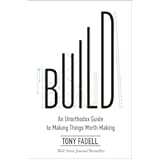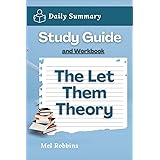Building a Simple Retirement and Financial Plan: Your Easy Guide
Many people find the idea of creating a financial plan daunting. Thoughts of complex budgets and endless paperwork often deter individuals from starting. However, building a strong financial future does not have to be complicated. This guide, expanding on the video above, simplifies the process. It focuses on practical steps for building a simple retirement and financial plan, making it approachable for everyone.
Start with Understanding Your Spending
The first step in any financial plan involves knowing where your money goes. Traditional advice often suggests creating a budget immediately. This approach can be overwhelming. Instead, a simpler method is recommended.
Begin by observing your spending habits. Dedicate at least 30 days to this process. You might even watch your spending over a major holiday period. This observation phase helps you see real patterns. It is less about restriction and more about awareness. Tools exist to help with this tracking. Some programs automatically categorize transactions. This makes the job much easier. You simply set it up and let it run. Your personal information should remain private. No advertisements should pop up. This initial step builds awareness without the pressure of immediate cuts. Seeing actual spending can be quite revealing. It often highlights areas where money is spent unknowingly. This insight makes budgeting much more effective later on.
Define Your Future Financial Goals
Once you understand your spending, focus shifts to future planning. Retirement is a significant part of this. For some, retirement may feel very distant. It is hard to imagine life at 60 or 65. For others, retirement is closer. Their goals may be clearer.
Begin by simply thinking about your ideal future. What do you want to achieve? This does not require specific numbers yet. Consider your aspirations. Perhaps you want to travel. Maybe you dream of pursuing a hobby. Some people wish to contribute to charity. Others plan to work part-time. The goal is to establish a starting point. This initial vision creates motivation. It gives your financial efforts purpose. This plan will evolve over time. It is important to remember that.
Recognize That Your Plan Will Change
A financial plan is not set in stone. This is a crucial understanding. Life circumstances change constantly. Your budget will adjust. Your income might increase or decrease. What you desire from retirement can also shift. Imagine being asked to plan your entire future in ninth grade. It feels impossible. Life offers unexpected turns. Your financial plan needs flexibility. It should adapt as you grow. Regular reviews are essential. Adjustments keep your plan relevant. This dynamic approach ensures long-term success. It removes the pressure of getting everything perfect from day one.
Maximize Efficient Retirement Contributions
The final step involves smart contributions. This means making the most efficient choices. Prioritizing account types is key. For many, a workplace 401K is the first stop. The most important question is always: “Is there a match?”
A company match is essentially free money. For example, your employer might contribute 50 cents for every dollar you put in. This usually caps at a certain percentage of your salary. This match provides an immediate return. It is an unbeatable benefit. Always contribute enough to get the full company match. Do not contribute more to your 401K than necessary for the match. Once you hit the employer’s matching limit, stop your 401K contributions. This frees up funds for other options.
Consider a Roth IRA Next
After securing your 401K match, a Roth IRA is often the next best choice. This applies if your company offers a 401K match. If your company does not offer a 401K match, you might bypass the 401K altogether. In such cases, opening a Roth IRA becomes your first priority. This also holds true for similar plans like 457s or 403Bs without a match.
The Roth IRA offers significant advantages. You gain more control over investments. There are usually fewer hidden fees. You select your own investments. This flexibility helps tailor your portfolio. Accessing funds in a Roth IRA can also be simpler. Generally, withdrawals of contributions are tax-free and penalty-free. This offers a safety net. It can be especially beneficial for unexpected needs. Understanding these account types helps build your simple retirement and financial plan more effectively.






